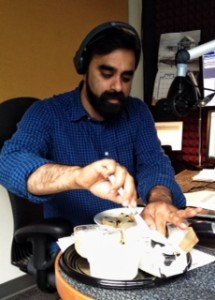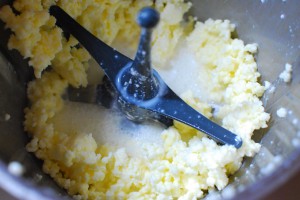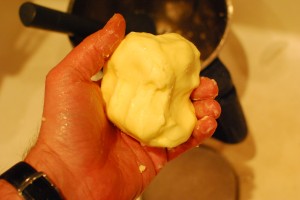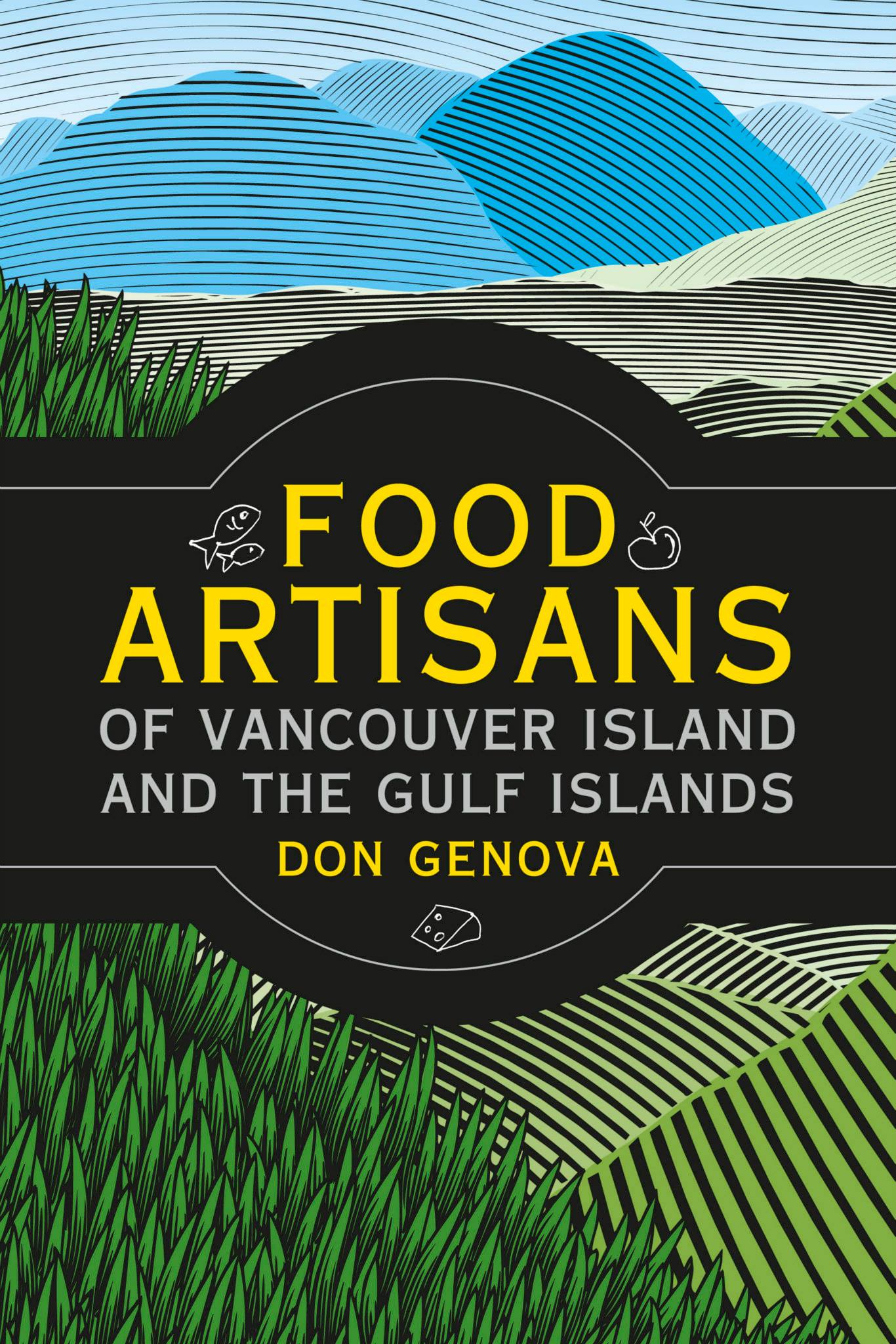
CBC Radio host Khalil Aktar trying butters during my Food Matters segment
A study published a couple of weeks ago has renewed the debate on what kind of fat humans should eat to stay healthy. The study suggested that consumption of saturated fats, like those found in butter and red meat, is not associated with an increased risk of heart disease. People who love butter are celebrating, but no one is suggesting you start eating it buy the pound (or kilo).
There are good things in butter. Many things that are generally recognized as healthy by the nutrition community:
Vitamins: a rich source of easily absorbed vitamin A, and other fat-soluble vitamins (D, E and K2), which are often lacking in our modern industrial diet.
Minerals: rich in important trace minerals, including manganese, chromium, zinc, copper and selenium, and even iodine.
Fatty Acids… and balanced omega-3 and omega-6 fats.
Then there is Conjugated Linoleic Acid… When butter comes from cows eating green grass, it contains high levels of CLA, a compound that is supposed to give you protection against cancer and also helps your body build muscle rather than store fat.
How do we know if the butter we’re eating comes from cows that eat green grass? That is a question that ranks number one right now of the queries coming in to the Quality Assurance department at the Paradise Island dairy in Nanaimo. People want butter from grass-fed cows. But cows in Canada, even those on Vancouver Island, don’t have a steady diet of just grass year round, our climate doesn’t support that. They eat silage and grains in a diet balanced to produce the greatest volume of milk possible.

Butters I made from Avalon and Island Farms whipping cream.
There isn’t really even any truly local butter production on more than a tiny scale, especially if your definition of local is Vancouver Island. Paradise Island organic butter actually comes from Quebec. Island Farms is now owned by Quebec-based conglomerate Agropur. When I called their consumer line today I was told that milk for Island Farms products can come from any farmer in BC who sells milk to the BC Milk Marketing Board, and that Island Farm products can be produced either at the facility here in Victoria or one Agropur runs in Chilliwack. So Island Farms is now just a nice name, instead of meaning that all the milk comes from a co-op of dairy farmers here on the Island, like it used to. I heard from a listener that Natural Pastures in Courtenay is making butter on a small scale but I haven’t confirmed that with the dairy. Avalon Dairy from Vancouver makes an organic butter, the L’Ancêtre brand you will find in some grocery stores is also organic, also made in Quebec. And if you can get your hands on some very expensive European-made butter, you will find the fat content is actually higher than Canadian butter, sometimes 84 percent versus 80 percent, which bakers and foodies love because it creates a richer, flakier pastry dough.

Whipping Cream separated into butter and buttermilk by Thermomix!
And, resourceful people could make their own butter, with that sought-after higher fat content, using equipment as simple as shaking the cream in a mason jar to as complex as a food processor or Thermomix, my preferred method. You have choices in creams, your base ingredient…Island Farms whipping cream is 33% milk fat. Avalon Organic is 36% milk fat. I made butter from both of those. When I called Hilary Abbott at The Creamery at Cheese Pointe Farm to talk butter, by a complete coincidence he was just pasteurizing some cream to try making butter with an eye towards a future product. I threw my Thermomix in the car and went over and made some butter there as well.

Butter, after squeezing out as much water as possible.
The key is to squeeze out as much water as you can once you’ve rinsed off the buttermilk. Out of about 620 grams of cream I got 110 grams of butter, and the rest is buttermilk, (use it in baking!) so you can see why butter can be expensive. But it’s fun to make at home, and much fresher than what you get in grocery stores, which may have been frozen for months, actually.
After all that experimentation I have a lot of butter in the fridge. So my wife sent me this link from Bon Appetit magazine: 14 Butter Recipes to Consume with Wild Abandon. Happy cooking!


